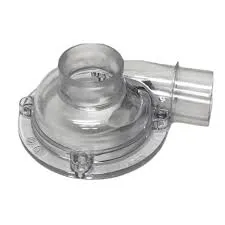Mobile:+86-311-808-126-83
Email:info@ydcastings.com
Understanding the Process and Benefits of Die Casting in Manufacturing Techniques
How Does Die Casting Work?
Die casting is a manufacturing process that is widely used to produce metal parts with high precision and excellent surface finishes. This process involves forcing molten metal into a mold cavity under pressure. The result is a finished part that requires little to no machining. This article explores the intricacies of the die casting process, the materials used, its advantages, applications, and the differences between various die casting methods.
The Die Casting Process
The die casting process begins with the preparation of the mold, also known as a die. A die is typically made from hardened steel or other durable materials and has two halves the ejector side and the cover side. These halves are precisely engineered to create the desired shape of the part to be produced. The two halves are bolted together, creating a cavity into which molten metal will be injected.
Once the die is ready, the metal is heated until it becomes molten, usually at temperatures ranging from 700 to 800 degrees Celsius, depending on the type of metal being used. Common metals used in die casting include aluminum, zinc, and magnesium, each chosen based on the specific requirements of the part being produced, such as strength and weight.
The molten metal is then injected into the mold at high speed and under high pressure, often exceeding 1000 psi. This rapid injection ensures that the mold is filled completely and reduces the likelihood of defects in the casting. The pressure is maintained until the metal solidifies, which typically takes only a few seconds. After the metal has cooled and solidified, the die halves are separated, and the cast part is ejected using ejector pins.
Advantages of Die Casting
One of the primary advantages of die casting is the high level of precision it offers. Parts can be produced with tolerances as tight as 0.1 mm, making this process ideal for applications where accuracy is paramount. Furthermore, die-cast parts have a smooth surface finish, which often eliminates the need for additional finishing processes.
Die casting is also highly efficient. Once a die is created, the process can produce thousands of parts in a relatively short time frame. This efficiency makes it a cost-effective option for high-volume production runs. The ability to cast complex shapes and designs is another significant advantage. Unlike other manufacturing processes, die casting can produce intricate geometries that would be difficult or impossible to achieve with traditional machining methods.
how does die casting work

Applications of Die Casting
Die casting is applied across a variety of industries, including automotive, aerospace, electronics, and consumer goods. In the automotive industry, for instance, die casting is frequently used to produce engine blocks, transmission housings, and various structural components. The lightweight nature of die-cast aluminum parts contributes to fuel efficiency and overall vehicle performance.
In the electronics sector, die casting is utilized to manufacture housings for devices and components that require good thermal conductivity and electromagnetic shielding. Consumer products, such as kitchen appliances and tools, also benefit from die casting, taking advantage of the process's ability to create durable and aesthetically pleasing parts.
Types of Die Casting
There are primarily two types of die casting processes hot chamber and cold chamber die casting.
1. Hot Chamber Die Casting This method is used for low melting point metals like zinc and lead. In this process, the molten metal is kept in a chamber and is injected directly into the die. The hot chamber method is faster and is usually suited for high-volume production runs.
2. Cold Chamber Die Casting This method is more suitable for metals with higher melting points, such as aluminum and magnesium. In cold chamber die casting, molten metal is poured into a chamber before being injected into the die. This process is slightly slower but is essential for materials that cannot be exposed to the high temperatures required for hot chamber die casting.
Conclusion
Die casting is a highly versatile and efficient manufacturing process that plays a crucial role in producing high-quality metal parts across multiple industries. By understanding how die casting works, its advantages, and its applications, manufacturers can better utilize this process to enhance production capabilities and meet the growing demands of various sectors. Whether through hot chamber or cold chamber techniques, die casting continues to be a vital process in modern manufacturing.
-
Why Should You Invest in Superior Pump Castings for Your Equipment?NewsJun.09,2025
-
Unlock Performance Potential with Stainless Impellers and Aluminum End CapsNewsJun.09,2025
-
Revolutionize Your Machinery with Superior Cast Iron and Aluminum ComponentsNewsJun.09,2025
-
Revolutionize Fluid Dynamics with Premium Pump ComponentsNewsJun.09,2025
-
Optimizing Industrial Systems with Essential Valve ComponentsNewsJun.09,2025
-
Elevate Grid Efficiency with High-Precision Power CastingsNewsJun.09,2025











